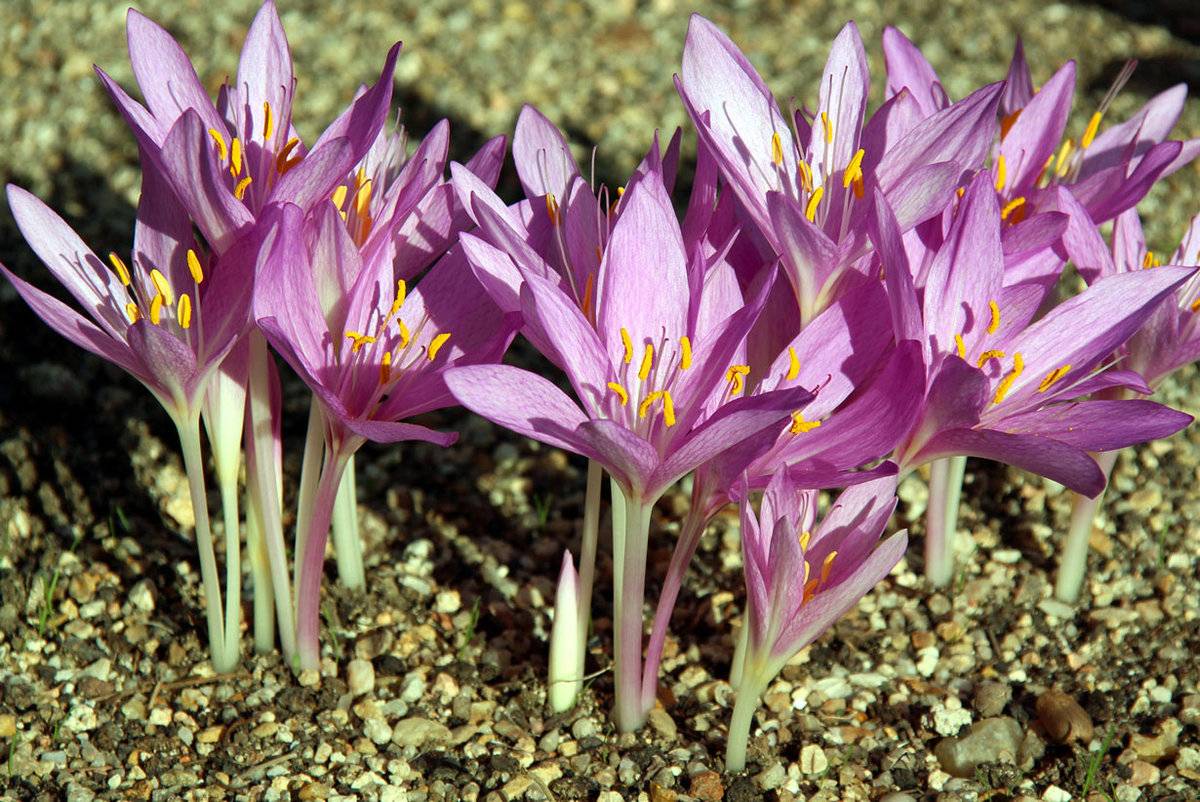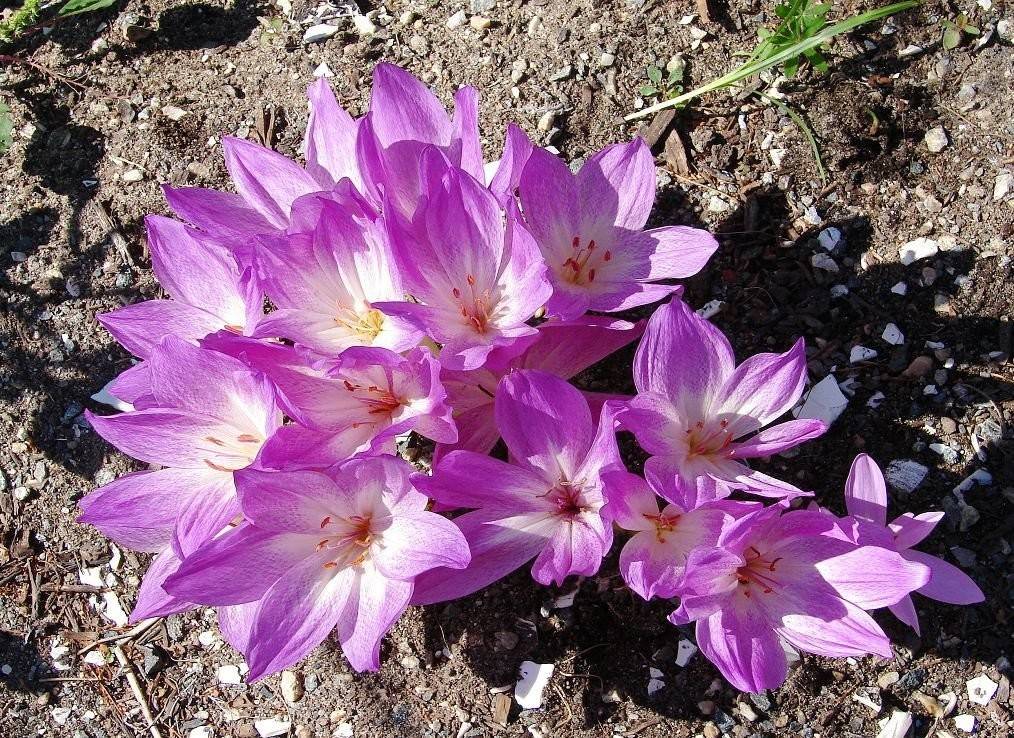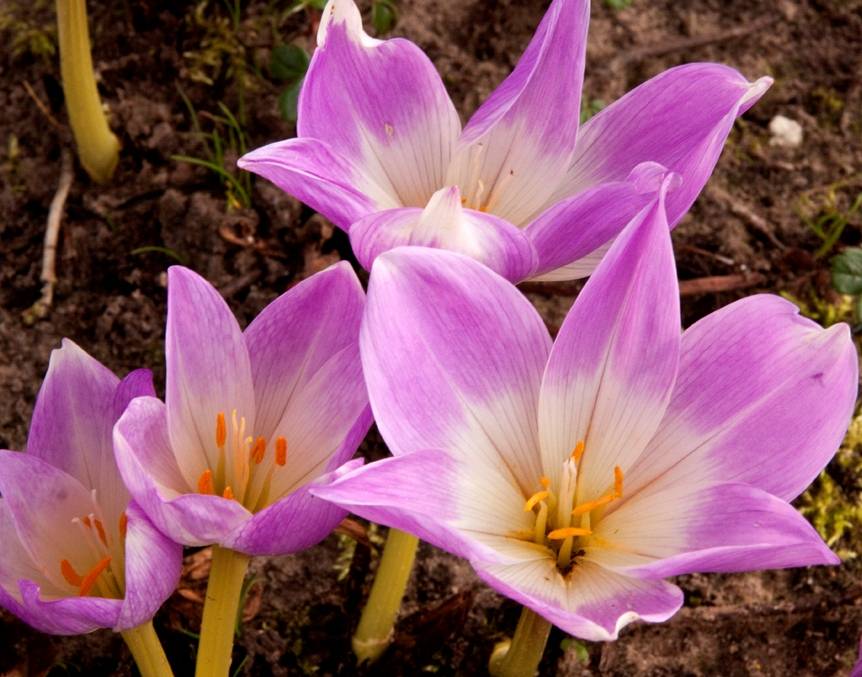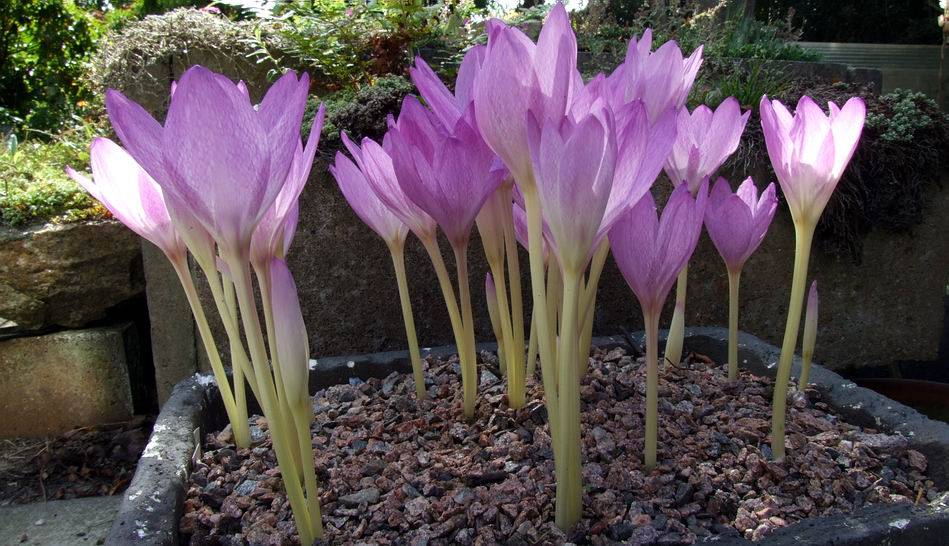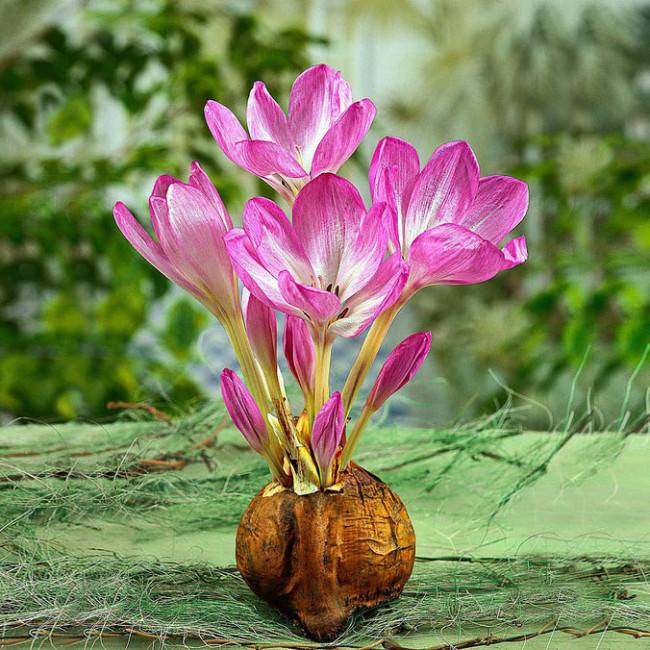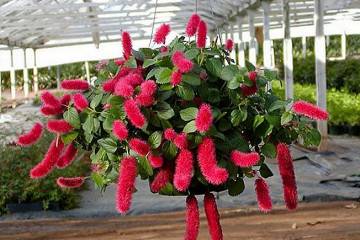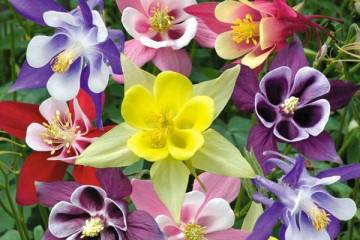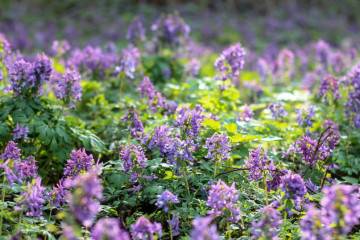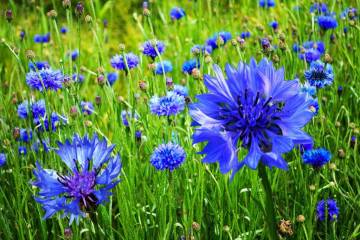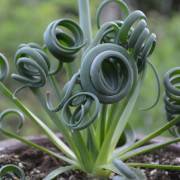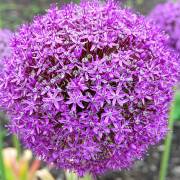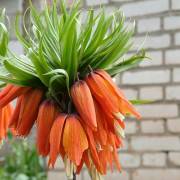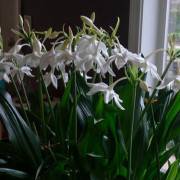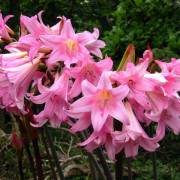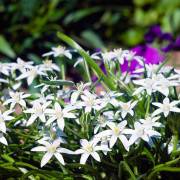Colchicum flower
Content:
- What does the crocus look like, what family does it belong to
- Common varieties of crocus
- Briefly about the history of appearance
- Features of caring for a crocus in the garden
- When and how the crocus blooms
- Cultivation of crocus from seeds
- Transplanting a crocus to a new place
- Possible problems in growing crocus
The beautiful flowers that cover the backyard delight the eye until winter. The variety of autumn varieties of colchicum is distinguished by an abundance of colors. The plant is unpretentious in care and almost does not get sick. It grows for several years in one place.
What does the crocus look like, what family does it belong to
Colchicum, Colchicum Speciosum, is a perennial plant that belongs to the colchicaceae family. Colchicum or osennik is called in another way. Includes over 70 species. Colchicum got its name for its peculiarity to bloom during a period when other plants have faded.
It grows in temperate climates: the Mediterranean, Central and Asia Minor, the Caucasus and Transcaucasia. Under natural conditions, it prefers to grow in damp meadows.
Colchicum is a perennial herb and has the following structure:
- On one bush, short stems grow in large numbers, which turn into leaves. Their plate is large and slightly elongated. The green part of the plant starts growing in the spring.
- The root system is a corm. Its top protrudes above the soil surface and is covered with shells of old brown leaves, which continue and gradually turn into a long tube. It forms the base of the lower part of the plant.
- The flower is large, consists of several petals. Funnel-shaped. Belongs to the bisexual type. In most species of colchicum, flowering begins in the fall. There are species that bloom in spring, but they are not popular with amateur gardeners.
- In place of the flower, an egg-shaped fruit is formed. It is a box, which is divided from the inside into 3 nests with drop-down flaps.
In height, an adult plant, including the top of the flower, reaches 20-50 cm.
Common varieties of crocus
The most popular among amateur gardeners are autumn varieties: Magnificent and Autumn. Having blossomed, they cover the surface of the earth with a lilac color and create a contrast with the surrounding nature, dazzling with yellow-red colors.
Description of the most common varieties:
Colchicum autumn
Under natural conditions, it grows in forest glades and meadows, excluding wetlands, and also occurs 2 km above sea level. Distributed mainly in the south-west of Europe. It grows in length up to 40 cm.
The plant starts growing in the spring. After the appearance of the stem and leaves, the fruit is formed in the form of a capsule. In the summer, the green part turns yellow and gradually fades, the seeds ripen, and the bulb is filled with nutrients.
In the summer, the crocus is dormant, and in the fall, its active flowering begins. 1-4 flowers bloom on one plant, their color is pale lilac and closer to white.
In the last months of autumn, the fruit is tied, but it does not have time to fully ripen. His wintering takes place under a layer of snow in the ground.
Colchicum magnificent
Iran, Turkey and Transcaucasia are considered his homeland. The warm climate allowed the plant to grow up to 40-50 cm in height.
Characteristic:
- The flowers are large, their color varies from lilac to pink and purple.
- Leaves are wide, up to 5-6 cm wide and 25-30 cm long. The color is saturated green. At the edges, the sheet is a little worried.
The most popular varieties of the splendid colchicum: Premier, Huxley and Waterleigh, Jerusalem, shady and others.
Colchicum Giant
Another name for Giant, or Giant. So it is called for a massive flower in size.
Its shape resembles a tulip. The color of the flower is amethyst, and the middle is light. The plant reaches a height of 15-25 cm.
Colchicum Byzantine
Its homeland is the countries with warm and temperate climates in the western part of Turkey, Greece and Romania.
The variety is small in height, reaches 10-15 cm. The flower is purple-red, about 4 cm in diameter. The flowering period begins in late summer and lasts throughout the fall. Up to 10-15 flowers and 5-6 leaves grow from one bulb.
Briefly about the history of appearance
It is believed that ancient Greece was the birthplace of the flower. He grew up near the Black Sea, in Colchis. Hence its second name, Colchicum, which means "descendant". The first mention of the plant was from Dioscorides, who in his writings classifies it as a toxic species.
In mythology, the crocus is said to be one of the flowers in the garden of the goddess Hecate. He and the poisonous plants surrounding him were reliably hidden from everyone by a high fence, and dogs guarded the entrance. Medea used it in the preparation of witchcraft drugs.
Features of caring for a crocus in the garden
Plant care is not difficult. It consists of the following recommendations:
- Watering. It is carried out during the period of active flowering and in prolonged drought. The rest of the time, the plant has enough moisture from the atmospheric precipitation, which is in the soil.
- Top dressing. Mineral fertilizers containing nitrogen are used as fertilizers. The first time is brought in in the spring, when several leaves appear on the surface. Second in the fall. It must be organic or ready-made mineral, intended for flowering plants.
It is worth constantly weeding and getting rid of weeds, as well as loosening the soil.
Features of winter care
A plant, especially a young one - the first year of life, needs to be covered for the winter.
To do this, use a special covering material or dry grass. The rest of the time, you can confine yourself to dusting with autumn leaves of the soil.
When and how the crocus blooms
The main life of colchicum colchicum occurs underground, where the bulb is located. When a flower appears, it grows on a thin stalk. After flowering, it fades and the final yellowing occurs on the ground.
With a lack of light or atmospheric precipitation, the flower closes in the shape of a cone. The flowering period is short: 2 to 3 weeks. In hot weather, the plant fades faster.
Types of flowers
Many species of crocus flowers differ in size, structure and color. Also, their surface can be regular smooth or slightly terry.The flowers range in color from white to pink, purple or purple. There are varieties with longitudinal stripes and uneven shades.
Flower shapes
The flowers are bell-shaped or funnel-shaped. They consist of 6 petals. The flower has stamens that are much shorter than the petals. The stamens are attached to the perianth pharynx: 3 of them are longer and located in the middle, the other 3 are shorter. There is only one pistil; it consists of three thread-like free columns and a stigma resembling the shape of a club.
Flowering period
Autumn varieties bloom in the period that begins at the end of summer and ends in late autumn, when persistent cold and frost sets in. During the flowering period, the plant emits a delicate and pleasant aroma.
Changes in care during flowering
A short flowering period is accompanied by the wilting of the flower directly on the ground.
How to care for the crocus during this time:
- Periodically remove wilted parts of the plant from the ground, which themselves have disappeared. There is no need to specifically trim dry areas. For full growth and nutrition, the bulb requires strength, and such an intervention disrupts its normal life.
- During the flowering period, apply top dressing and prevent the soil from drying out.
Cultivation of crocus from seeds
This method is suitable for reproduction of spring plant varieties. However, it has disadvantages:
- flowering begins only at 6-7 years;
- no daughter bulbs are formed.
The whole process takes a lot of time, which is required for the crocus to gain strength.
Germinating seeds
Only fresh and mature seeds are used for germination. They are harvested in late spring or early summer.
Colchicum flower growing from seed:
- First, the grains are washed. They are immersed in warm water for 5 minutes.
- Then it is placed in the soil, but not deep. The fossa should not exceed 0.5-1 cm.
- The land is used fertile and loose. It is better to pre-moisten it.
- A drainage layer is placed at the bottom of the hole, and a little sand is poured on top of the seedling.
Seeds planted in the ground do not always germinate in the first year. In order not to lose the landing site, it must be fenced off. As soon as the plant rises, they periodically water it, loosen the soil around and weed from the weeds. When the seedlings begin to grow too crowded, weeding is done.
Transplanting a crocus to a new place
Colchicum flower grows in open ground for 5-6 years. It can be transplanted to a new place only at the end of this period.
Full development requires a spacious area that is abundantly lit. A little shading is also fine, but the crocus does not grow so well under the crown of the tree.
Colchicum: planting and leaving in open ground:
- Bud. Sour or alkaline will do. It is desirable that the land is drained. Do not plant in clay soil. There is stagnation of moisture in it, which has a bad effect on the root system.
- Peonies and junipers are good neighbors.
Before planting a plant, one of the following fertilizers must be applied to the soil:
- superphosphate - 1 tbsp. spoon for 1 square meter;
- wood ash - 1 liter per 1 square meter;
- organic matter - mix 10 kg of humus with 5 kg of sand per 1 sq. m.
When to dig croplands for transplant
You need to dig up the bulbs in the spring in May or early June. You can understand that a plant needs a transplant by its appearance.In autumn, the leaves begin to grow very crowded, forming a bunch. This is due to the fact that daughter bulbs have grown on the bulb.
If you do not transplant on time, the plant will stop blooming and begin to hurt.
After the onion has been dug out, it must be washed, treated with a weak manganese solution and dried well. Then place in a dark and cool place over the summer for storage.
When to transplant croplands that bloom in autumn
Colchicum autumn planting and bulbs care:
- carried out at the end of summer;
- the distance between the holes is 10-15 cm;
- the depth of the fossa is 7-9 cm.
Bulb tubes should be sticking out of the ground. If it is strong enough and full of nutrients, then seedlings appear in 2-3 weeks. After planting, the soil is watered abundantly and sprinkled with mulch to prevent evaporation of moisture.
Possible problems in growing crocus
Despite the fact that the crocus is unpretentious in care, it is worth paying close attention to possible diseases:
- If the plant grows in the shade throughout its entire life period, then slugs and snails can settle in it. They leave behind a film on the soil. Sufficient evaporation of moisture does not occur and the earth becomes waterlogged, rot forms on the plant. Also, pests feed on leaves. To get rid of it, it is worth periodically inspecting the flower and manually removing the slugs. Sprinkle the soil with chopped shell rock or eggshells, sprinkle the leaves with tobacco tincture.
- With abundant watering or stagnant water, the plant can be infected with fungal diseases. This explains why gray rot occurs. The affected areas must be removed, and the entire surface part must be treated with a ready-made solution for this, such as Cuproxat.
Periodic examination of the crocus will help prevent the onset of diseases.
The choice of variety depends on the personal preference of the amateur gardener. All plants are the same in care and do not require much attention. They are able to grow in one garden bed for several years.
